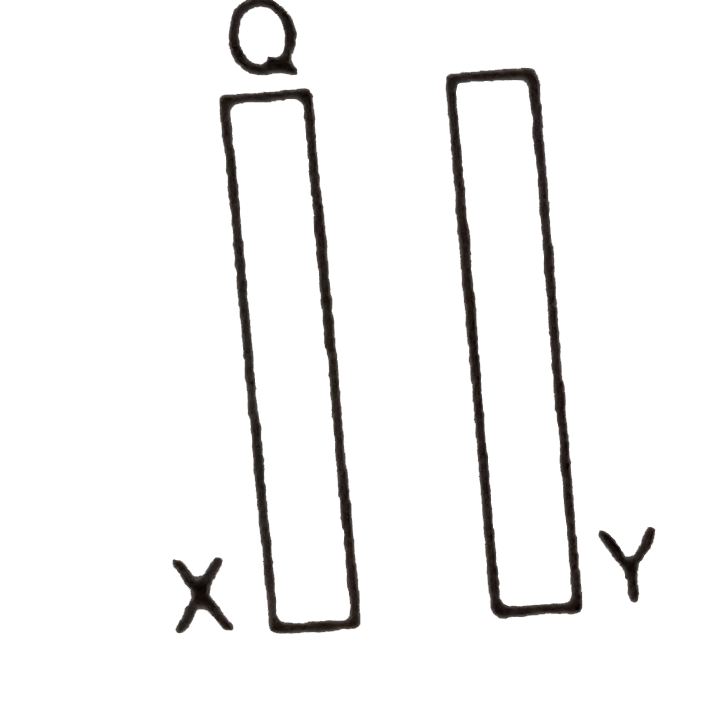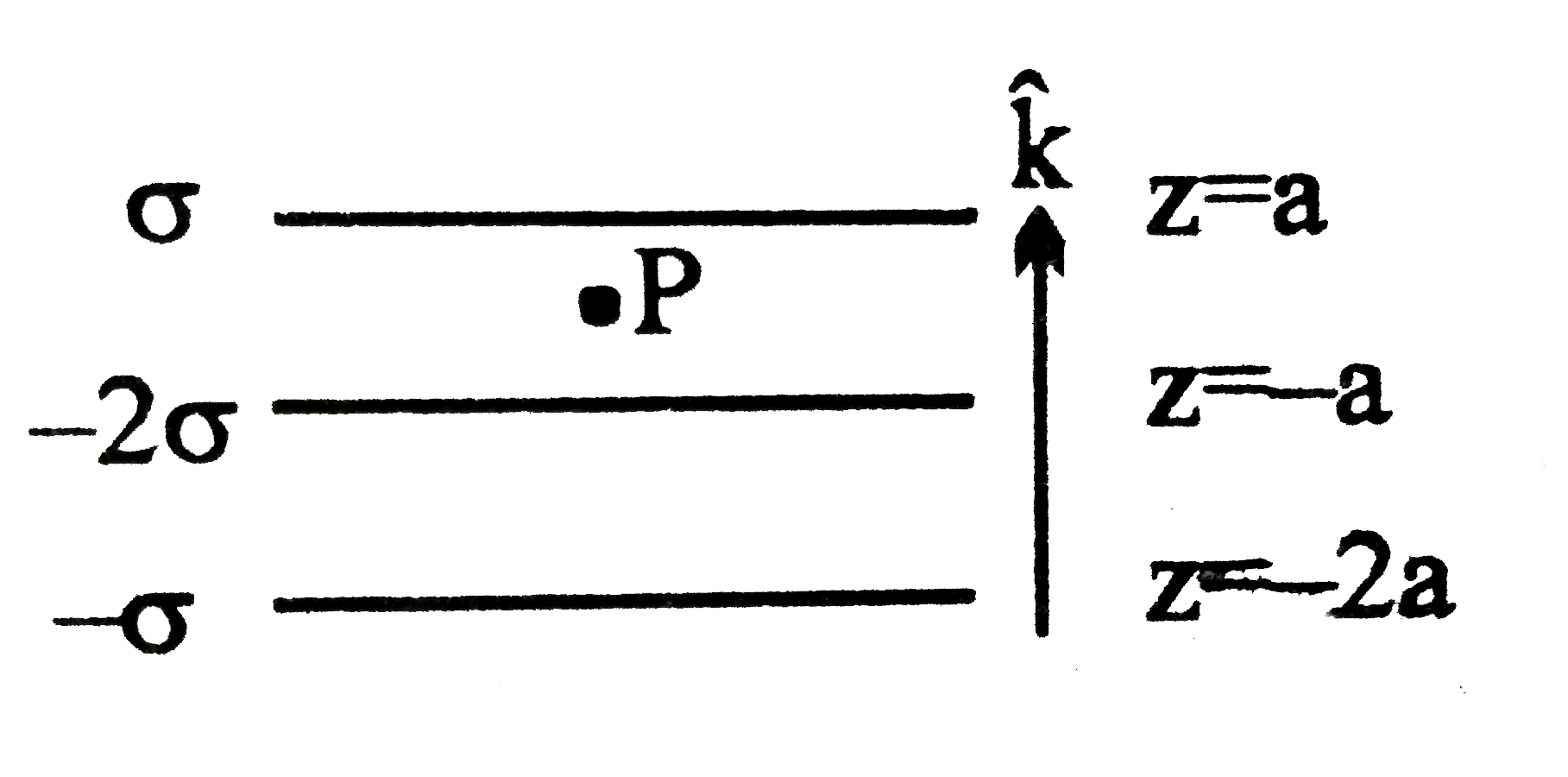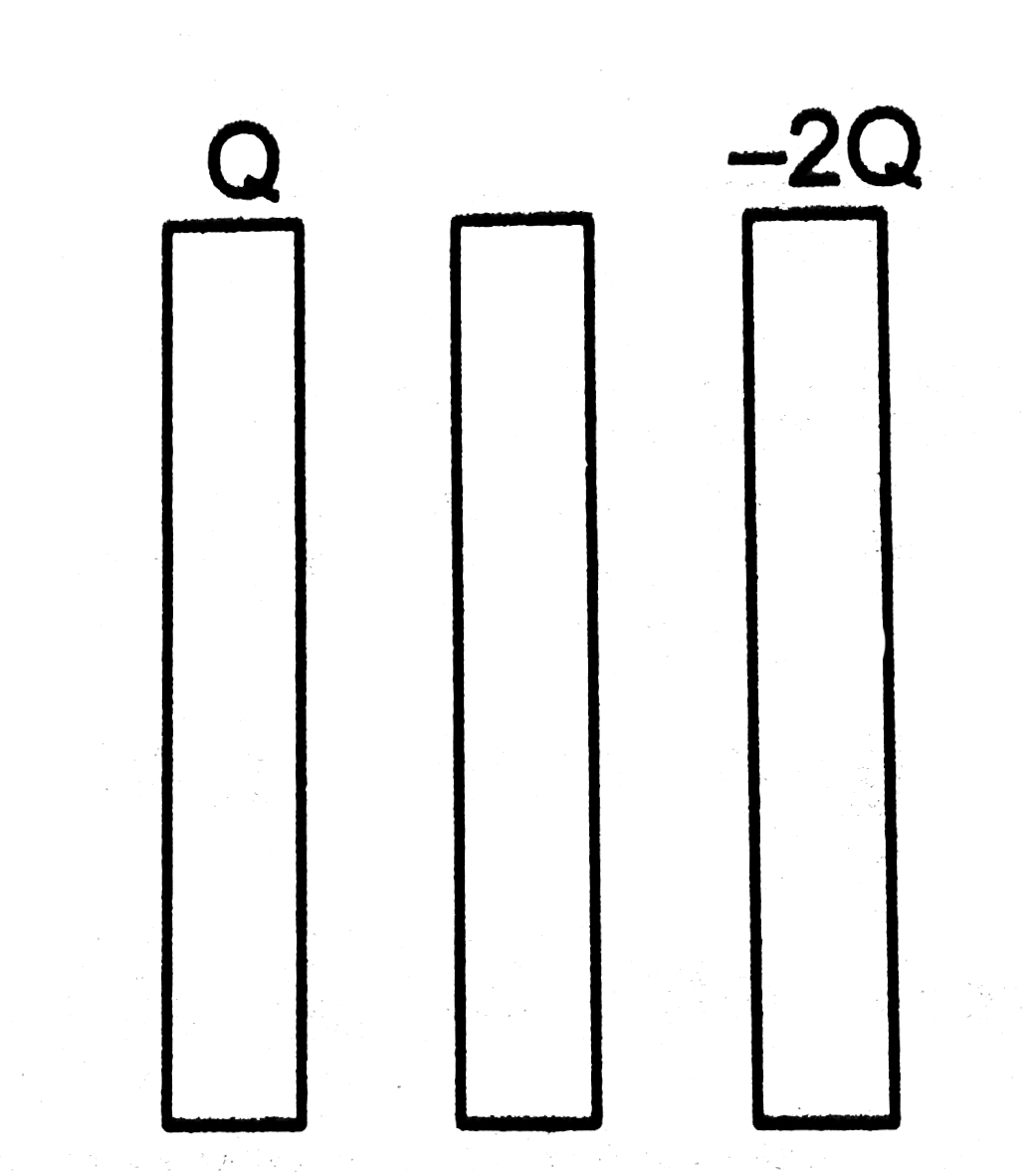Two large conducting plates X and Y. each having large surface area A (on one side), are placed parallel to each other as shown in figure (30-E7). The plate X ia given a charge Q whereas the other is neutral. Find (a) the surface charge dendity at the inner surface of the plates X, (b) the electric field at a point to the left of the plates, (c) the electric field at a point in between the plates and (d) the electric field at a point to the right of the plates.

(a) For the surface charge density of a
single plate. Let the surface charge density
at both side be σ1andσ2.
Now electric field at both ends
=σ12eplison0andσ22eplison0
Due to net balanced electric field on plate
and r1equal→r2
q1=q2=Q2
Net surface charge density = Q2A
(b) Electricfield to the left of the plates
Since r=Q2A .
Hence, electric field = Q2A(ε0)
This must be directed towards left as 'X' is
the charge plate.
(c) and(d) here in both the cases the
charged plate 'X' acts as the only source of
electric field, with +ve in the inner side
and'Y' attracts towards it with -ve in its
innerside. So, for the middle portion
E is towards right.
(d) Similarly for extreme right the outer
side of the 'Y' plate acts as +ve and hence
it repels to the right with E = Q2Aε0.
Topper's Solved these Questions
Similar Questions
Two conducting plates X and Y, having large surface area A (on one side), are placed parallel to each other as shown in figure. The plate X is given a charge Q whereas the other is neutral. Find :
(a) The surface charge density at the inner surface of the plate X,
(b) The electric field at a point to the left of the plates,
(c) The electric field at a point in between the plates and
(d) The electric field at a point to the right of the plates.

View SolutionTwo conducting plates M and N, each having large surface area A (on one side), are placed parallel to each other in figure. The plate M is given charge Q1 and N, charge Q2(<Q1). Then

View Solution
Knowledge Check
Two conducting plates M and N, each having large surface area A (on one side), are placed parallel to each other in figure. The plate M is given charge Q1 and N, charge Q2(<Q1). Then
 Aelectric field at point A is (Q1−Q2)/2Aε0 toward right.Belectric field at point B is (Q1−Q2)/2Aε0 toward right.Celectric potential of N is greater than M.Dall of the above
Aelectric field at point A is (Q1−Q2)/2Aε0 toward right.Belectric field at point B is (Q1−Q2)/2Aε0 toward right.Celectric potential of N is greater than M.Dall of the aboveEach of two large conducting parallel plates has one sided surface area A. If one of the plates is given a charge Q whereas the other is neutral, then the electric field at a point in between the plates is given by
AQAε0BQ2Aε0CQ4Aε0DZeroThree large parallel plates have unifrom surface charge densities as shown in the figure. What is the electric field at P
 .A−4σ∈0ˆkB−4σ∈0ˆkC−4σ∈0ˆkD−4σ∈0ˆk
.A−4σ∈0ˆkB−4σ∈0ˆkC−4σ∈0ˆkD−4σ∈0ˆk
Two conducting plates X and Y, each having large surface aera A (on one side), are placed parallel to each other as show in figure.

Find the surface charge density at the inner surface of the plate X.
View SolutionThree identical metal plates with large surface areas are kept parallel to each as shown in figure (30-E8). The leftmost plate is given a charge Q, the rightmost a chrgear2Q and the middle one remains neutral. Find the charge appearing on the outer surface of the rightmost plate.

View SolutionThree inentical metal plates with large surface areas are kept parallel to each as shown in figure (30-E8). The leftmost plate is given a charge Q, the rightmost a chrge _2Q and the middle one remains neutral. Finde the charge appearing on the outer surface of the rightmost plate.

View SolutionEach of two large conducting parallel plates has one sided surface area A. If one of the plates is given a charge Q whereas the other is neutral, then the electric field at a point in between the plates is given by
View SolutionFour metallic plates each with a surface area of one side A are placed at a distance d from each other as shown. Then, the capacitance of the system between X and Y is

View Solution
